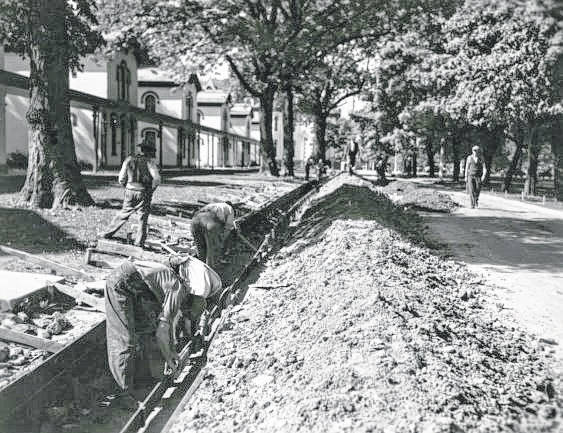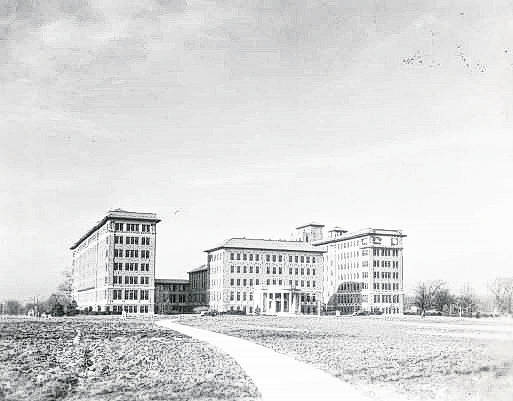

The Ohio History Connection recently launched its first in a series of three free lesson plans as part of the “Little Stories of the Great War: Ohioans in World War I” project funded by the National Endowment for the Humanities (NEH).
Paul LaRue, retired Washington High School social studies teacher and local historian, was instrumental in the creation of the first lesson plan by detailing the start-up of the Disabled American Veterans (D.A.V.) organization. Robert S. Marx was born in Cincinnati on Jan. 28, 1889. He graduated from the University of Cincinnati Law School in 1909 and went into private practice in Cincinnati. He enlisted a month after the United States entered World War I. Marx found himself in command of a battalion on Nov. 10, 1918, in one of the final battles of the war. While leading his battery he was severely wounded in heavy combat, an event he detailed on a 1919 questionnaire about his military service in World War I for the American Jewish Committee.
“(I was) severely wounded Nov. 10, 1918, in attack upon Baalon in Meuse-Argonne Offensive,” Marx wrote in his report. “Was acting as operations officer of the 357th Infantry, having been in front line of attack for 74 continuous without relief except seven days changing sectors. On the night of Nov. 9-10, crossed the Meuse River at Sassay marching miles on nights so cold that our water froze in the canteen. Was ordered to attack the town of Baalon immediately. Third Battery 357th Infantry having lost all officers above the grade of first lieutenant, I was ordered to take command of this and press attack on Baalon. When I reached Battery headquarters, found the men digging in and gave directions and orders for an immediate advance. After a brief period the advance commenced and was met with machine gun fire from both flanks and artillery fire from four sides. While leading my battery forward, a high explosive shell landed close by killing my intelligence officer and wounding me in some 14 places.”
Marx was carried to a nearby first aid station before being sent in an ambulance to Mobile Hospital #6 at Barennes near Grandpre. Following surgery he was sent to Paris before finally being discharged when he reached Cape May in the states. The reason Marx’s story is important to the lesson plan is to show his creation of the Disabled American Veterans in Cincinnati. Originally named Disabled American Veterans of the World War, Marx was the first national commander of the organization. Detailed in the lesson plan are similar short stories about the creation of the various veteran organizations that still exist today, mostly due to World War I.
“We are well into the Ohio World War I centennial, and so many of these connections to our community, our veterans and veteran organizations go back to that war,” LaRue said recently about the lesson plan. “I know last year we talked about the Homer Lawson Lesson Plan, but this year we wanted to look at more of the history of the veteran organizations that are both here in the community and have roots at the state level. What we hope other communities do with this lesson is use some of the activities to find their own local connections to these organizations. There is something like 550 American Legion posts in the state of Ohio and there are more than 350 VFW posts. Almost all of their origins are with World War I and every one has a unique story as to how it was created and who the post was named after.”
Additionally in the lesson plan are readings and pictures about the National Soldier’s Home in Dayton and the National Veterans Memorial and Museum in Columbus. Using the images and a short text on each, LaRue said he hopes these will spark some ideas in other communities on how to connect students with local history.
For the full lesson plan visit http://blog.teachingamericanhistory.org/2017/10/19/world-war-i-and-the-founding-of-the-disabled-american-veterans/.
“What started as a handful of guys and a house, veterans helping veterans, Marx created a national veterans organization and it started as small as any other,” LaRue said. “I am a member of the Ohio World War I commission and one of the things I do is work on educational content. I am fortunate by having spent my time in the classroom, I kind of understand what it is like. So I like to create lesson plans that I think a teacher would be able to use. I try to keep them fairly short because teachers don’t have a lot of time in the classroom. With this lesson a teacher can pick and choose how to teach these lessons. The reading and teaching of Captain Marx can fill up class time or if you want to look at the name sake’s of the local veteran organizations in the community, you can do that. People seem to think they need to start on the big picture, but just starting from your local area and working your way out can have a great impact. Your textbook isn’t going to talk about your community. Textbooks are good to learn from, but using this plan you can show students a more real side to history that they just cannot get out of a textbook.”



